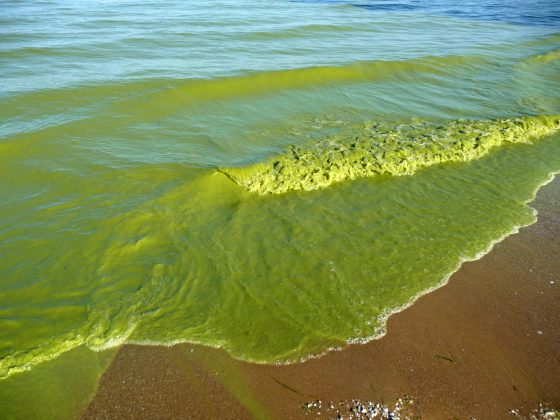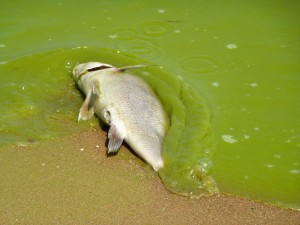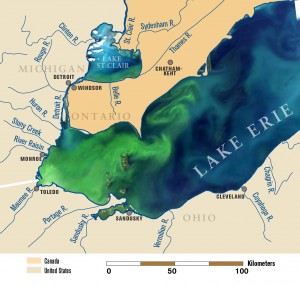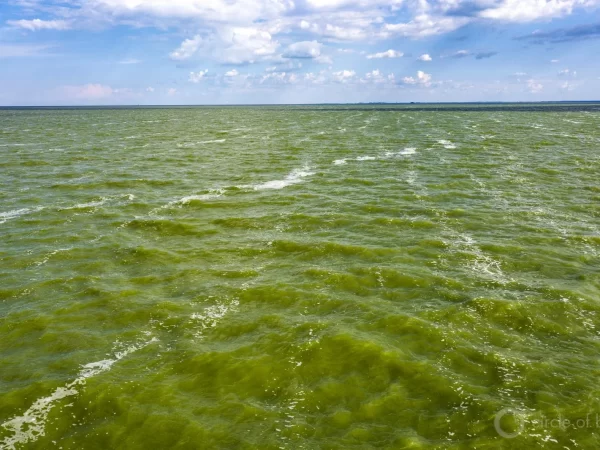
In 2011, Lake Erie had the largest harmful algae bloom in its recorded history. The algae peaked in October of that year and covered about 2,000 square miles of the lake. A new study from the University of Michigan believes this bloom was the result of several contributing factors and not likely to be an isolated incident
Using computerized climate models, researchers predict high levels of precipitation and a higher frequency of springtime rainstorms. Additionally, no-till farming leaves high levels of dissolved reactive phosphorus or DRP on the upper levels of soil from fertilizers once crops are planted. This type of phosphorus promotes algae growth and when the heavy rains come in, the phosphorus-rich soil is washed into Lake Erie.
The 2011 algae bloom in Lake Erie was made up almost entirely of toxic blue-green Microcystis algae. This type of algae produces the liver toxin mycrocystin and, according to the study, the levels of this toxin peaked at 224 times the World Health Organization guidelines.
More information about NSF Grant No. 1039043, “Extreme events impacts on water quality in the Great Lakes: Prediction and management of nutrient loading in a changing climate,” is available at http://www.miseagrant.umich.edu/nsfclimate.
Read the full press release >






